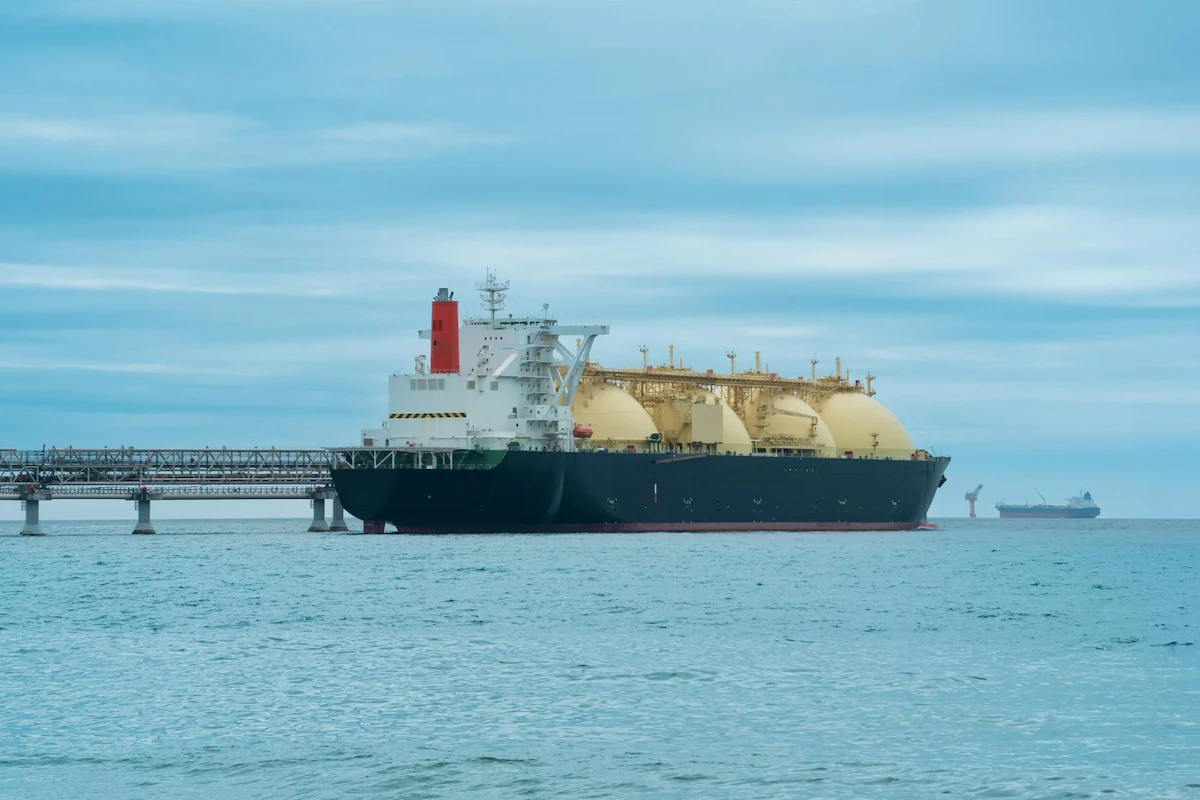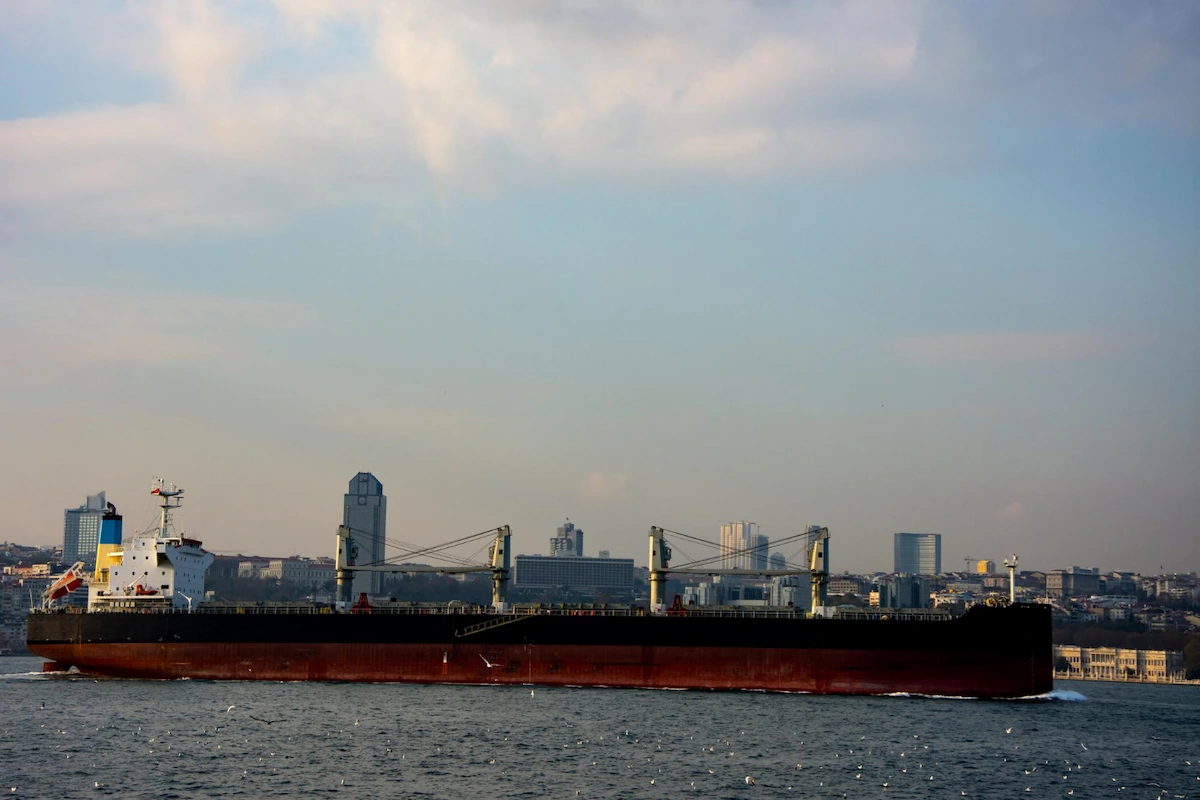
14-08-2025
Understanding Tanker Ships, Types, and Role in the Economy
When talking about sea freight, like vessels, you probably have heard about a tanker ship. Oil tanker ships work to load fuel and are one of the most important elements in the global oil and gas supply chain.
This article discusses the definition of tanker ships and their role in sea freight. To learn more about tanker ships, read this article until the end!
What Is a Tanker Ship?

Tanker ships are specially used to load oil, natural gas, or certain liquids. Moreover, they can carry passengers or certain goods. The main function of tanker ships is to distribute crude oil, petrochemical feedstocks, or natural gas efficiently without needing a container.
Not only crude oil, but also this vessel can load liquid chemicals, like hydrogen, and other liquids, like wine or coconut oil. The ability to transport large quantities of liquids safely and efficiently makes them increasingly important to the global economy, particularly in the chemical and energy industries.
Types of Tanker Ships

Tankers are usually divided into several types based on the goods and size. Here is the complete information about the types of tankers:
1. Crude Oil Tankers
Crude oil tankers are designed specially to load crude oil to the refinery. This ship also maintains the crude oil quality to remain optimal despite going on a long delivery journey from the oil field to the refinery.
Crude oil tanker ships play an important role in connecting the crude oil supply chain from refineries to markets. As a result, industries like petrochemicals and pharmaceuticals are able to use it.
Crude oil tankers are divided into several types based on their size, such as:
- VLCC: VLCC (Very Large Crude Carriers) are large crude oil tankers with a capacity of between 200,000 and 320,000 DWT. These ships usually transport oil from the Middle East and East Asia.
- ULCC: ULCCs (Ultra Large Crude Carriers) have a larger capacity than VLCCs of more than 320,000 DWT. It is usually used to transport oil to high-demand routes, such as North America and the Middle East.
- Suezmax: A Suezmax is a medium-sized tanker that can carry crude oil of 120,000–200,000 DWT. The name of this ship is taken from the Suez Canal because it often transports oil between Europe and Asia.
- Aframax: Aframax is a small crude oil tanker of 80,000–120,000 DWT. This vessel is used for domestic crude oil transportation and to reach ports that are inaccessible to larger vessels.
2. Chemical Tanker Ships
Chemical tankers carry bulk chemical liquids. They are equipped with a feature to carry various chemical liquids, from general industrial chemicals to dangerous goods.
Moreover, this ship also has a cargo separator so that it can load more than one chemical without cross-contamination. Furthermore, they are also coated with a special coating or made of stainless steel to prevent chemical reactions.
Chemical tankers are divided into three types based on their level of protection, as follows:
- IMO Type 1: It is designed to transport hazardous chemicals that require special treatment and high security.
- IMO Type 2: It can carry moderately hazardous chemicals.
- IMO Type 3: It carries chemicals that are not particularly hazardous and do not require the same level of security as types 1 and 2.
Read also: Sustainable Infrastructure: Definition, Dimension, & Benefit
3. Product Tanker Ships
Product tankers are designed to carry petrochemical products, such as gasoline, diesel, and so on, to reach the final customers. Here are some product tankers you should know:
- Long Range Tankers (LR 1 and LR 2): They can carry between 55,000 and 160,000 DWT. LR 1 is typically used for long-distance transportation, while LR 2 is used for transoceanic transportation.
- Medium Range Tankers (MR): They have a capacity of 40,000–55,000 DWT and are used for intercontinental transportation. MR tankers have cargo separators, enabling them to carry a variety of products.
- Handysize: Handysize tankers have a capacity of 10,000–40,000 DWT and are used for domestic transportation.
4. LNG Tanker Ships
These tankers load LNG to the market. They have an insulation system maintaining the low temperature of LNG. That way, LNG will not evaporate. Moreover, the tanks are tube-shaped and have special membranes.
Among LNG tankers are conventional tankers that carry up to 170,000 cubic meters of LNG and Q-Flex tankers that can carry 266,000 cubic meters.
5. LPG Tanker Ships
LPG tankers are used to transport LPG and its constituent gases, such as propane and butane. These tankers have pressurized tanks and cooling systems that keep the LPG in liquid form. They are divided into fully pressurized, moderately pressurized, and fully refrigerated tankers.
6. Food-Grade Liquid Tanker Ships
Aside from chemicals and crude oils, tankers can also carry food-grade liquids, such as vegetable oil, edible oil, and wine. This ship has a high hygiene standard with a temperature control system to maintain the quality of the liquid during the shipment.
Read also: 7 Port Functions for the Economy and Trading, Must Note!
Tanker Ships’ Role in the Global Economy
Tankers have an important role in the economy, namely:
- Distributing petrochemical and food-grade products from the field to the market all around the world.
- Offering a more cost-effective transport cost because you can deliver bulk products without resending the rest.
- Opening new jobs, such as harbor workers, mechanics, logistics experts, and so on.
- Increasing harbor city growth and maritime centers across the world.
- Developing proper logistics facilities.
That concludes the information about tanker ships you can learn. As explained before, tanker ships have a crucial job in the distribution and supply chain of petrochemical products.
Regarding chemicals and LPG, Chandra Asri Group offers vessel businesses operated by PT Chandra Shipping International and PT Marina Indah Maritim.
We are accommodated by nine chemical and gas vessels with a capacity of up to 106,650 DWT. However, this number is likely to continue to grow over time. In addition, PT SCG Barito Logistics and PT Chandra Cold Chain operate a fleet of 155 trucks for land transportation.
So, make sure to use trustworthy sea freight from Chandra Asri Group!
Read also: Oil Refinery: Definition, Processes, and Its Functions